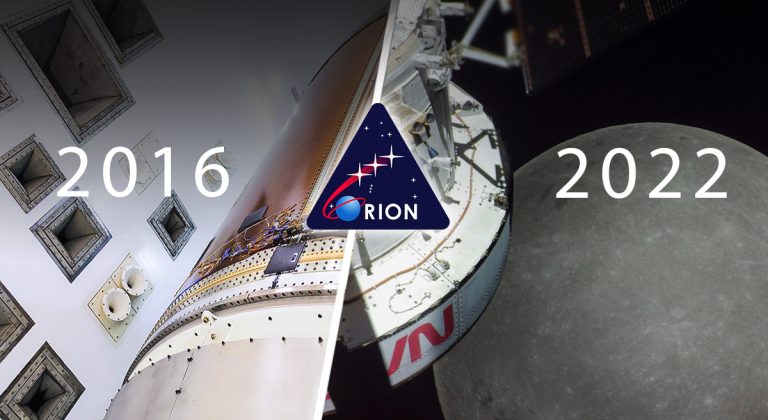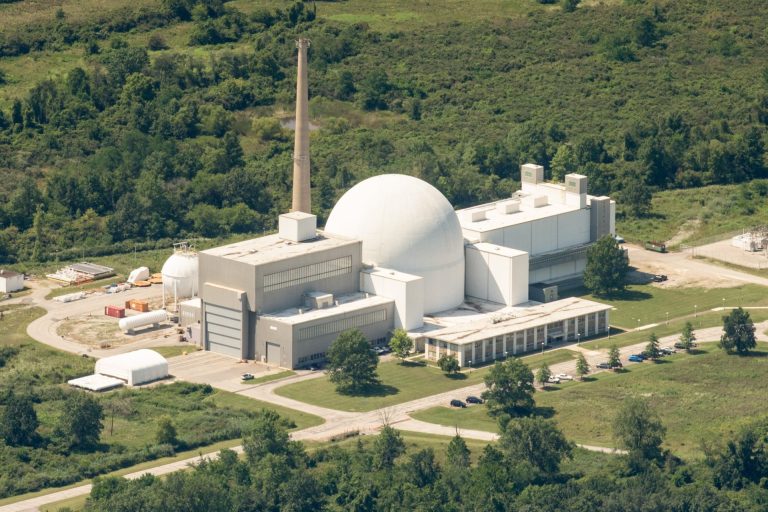2022: Orion’s First Flight!
Following a successful launch of NASA’s Space Launch System (SLS), the most powerful rocket in the world, the agency’s Orion spacecraft is on its way to the Moon as part of the Artemis program. Carrying an uncrewed Orion, SLS lifted off for its flight test debut at 1:47 a.m. EST Wednesday, November 16 from Launch Pad 39B at NASA’s Kennedy Space Center in Florida.
40,000 Miles to Go
The launch is the first leg of a mission in which Orion is planned to travel approximately 40,000 miles beyond the Moon and return to Earth over the course of 25.5 days. Known as Artemis I, the mission is a critical part of NASA’s Moon to Mars exploration approach, in which the agency explores for the benefit of humanity. It’s an important test for the agency before flying astronauts on the Artemis II mission.
Orion Before the Launch – A Journey Measured Not in Miles, But in Years
Acoustic and Vibration Testing
The Orion service module, provided by the European Space Agency (ESA), powers, propels, and cools the vehicle; it also provides Orion with air and power. Acoustic and Vibration testing began in 2016 and continued through the end of summer 2017.
Testing took place at NASA’s Plum Brook Station (Neil A. Armstrong Test Facility), located in Sandusky, Ohio. NASA called on the engineering prowess of Team Corporation to design and deliver the world’s most powerful MDOF (Multi-Degree of Freedom) mechanical vibration test system, which was used for extreme vibration testing of the Orion spacecraft. NASA required their massive vibration test system be precisely controlled. With their expertise and experience in multi-shaker vibration control, Data Physics was called upon to provide the control system.
After years of development, the testing of Orion’s mission hardware was a major milestone in the project, as well as in the history of Data Physics and Team Corporation.
Mechanical Vibration Facility (MVF) Highlights:
- The world’s most powerful vibration test system
- 75,000 lbs. max test article mass
- 77 ft. test article height
- 4,650,000 lbs. seismic mass
- Frequency performance from 5-150 Hz.
- Excited to 1.5 g
- Swept Sine Testing with Predictive Limiting
- Maximum vertical static force 720,000 lbs.
Orion Service Module Acoustic Testing
The Reverberant Acoustic Test Facility (RATF) at NASA’s Plum Brook Station – the largest acoustic test facility in the world – is a chamber that features a wall studded with numerous rows of powerful acoustic horns. Nitrogen gas flowing through hydraulic actuators that are turning on and off at incredibly rapid speeds create the horns’ horrendous acoustic assault. Capable of bathing the service module with an overall acoustic sound pressure level of 163 decibels, it is by far the most powerful acoustic chamber in the world.
This facility features 23 Team Acoustic Modulators, producing over 4.5 Megawatts of sound power, requiring 70,000 scfm gas flow at 200 psi.
Take a virtual tour of the NASA test facility
The Space Environments Complex (SEC) houses the largest and most powerful space environment simulation facilities in the world. This includes the largest space simulation vacuum chamber, most powerful spacecraft acoustic test chamber and the world’s highest capacity and most powerful spacecraft shaker system.



